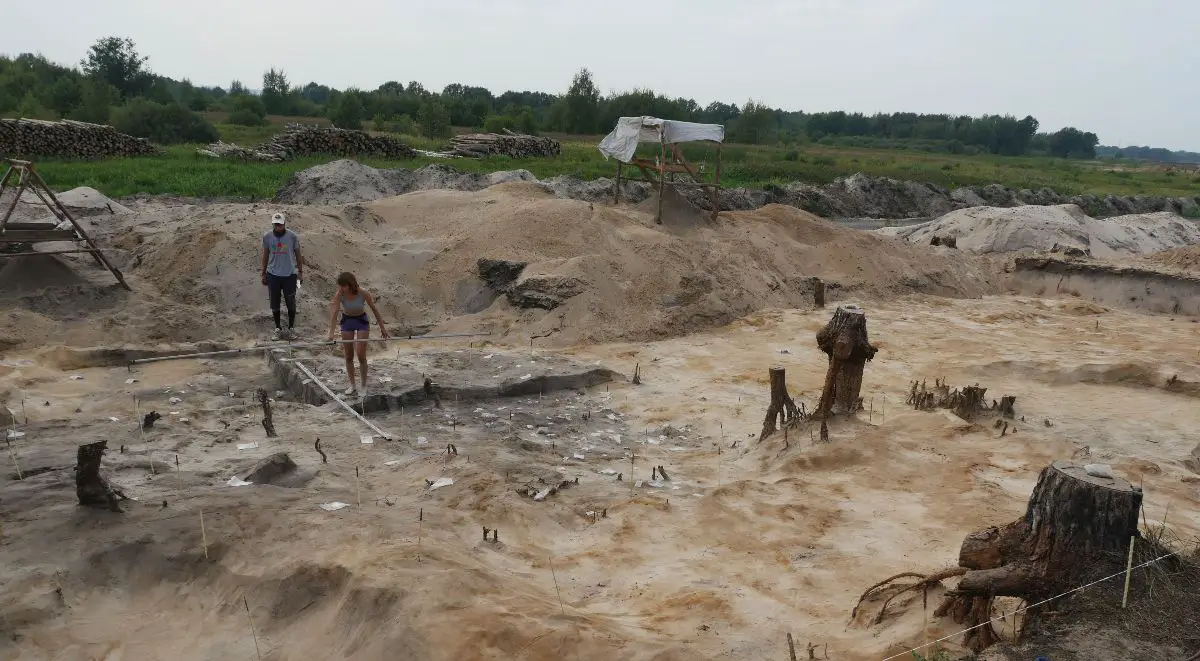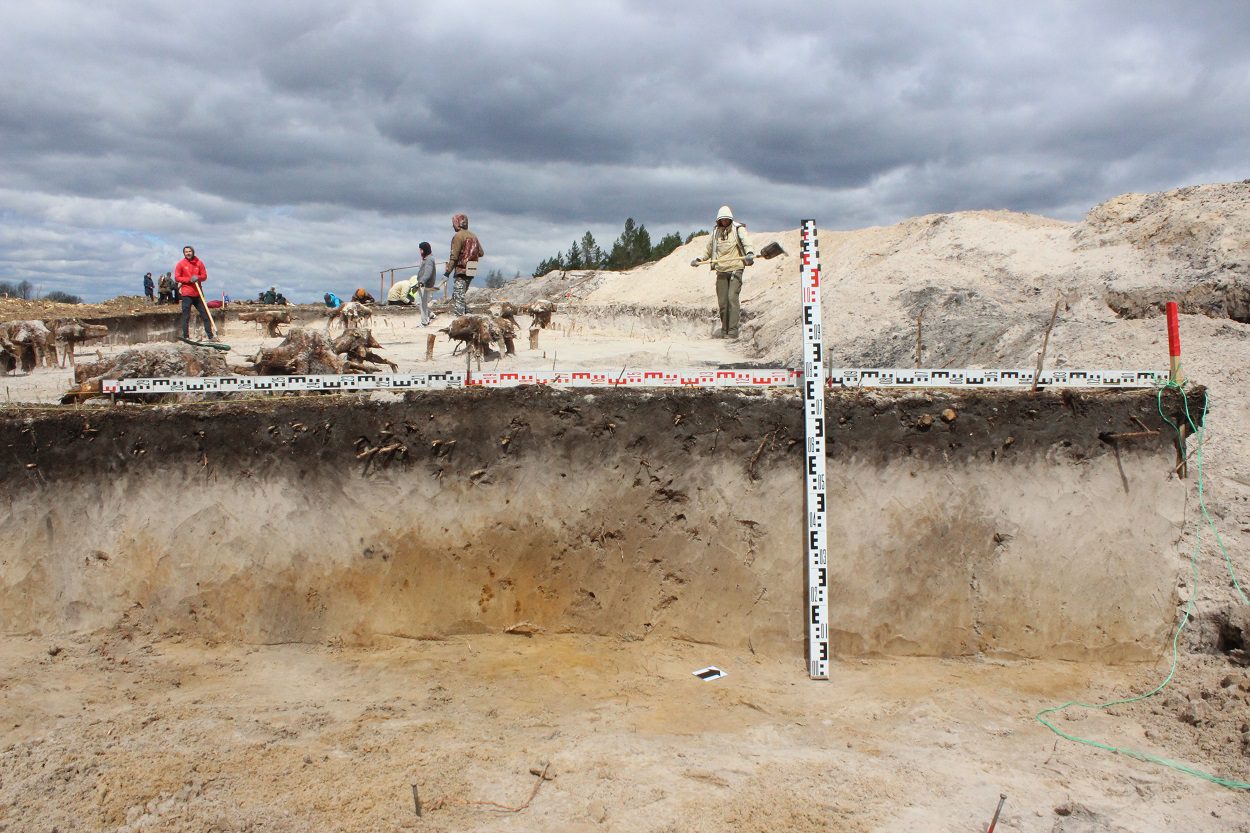Archaeologists from the Institute of Archaeology of the Russian Academy of Sciences has excavated traces of Mesolithic settlements near the Veletma River in Russia.
The settlements date from around 10,000 years ago during the early stage of the Butovo culture, described as communities of Mesolithic hunter‐gatherers that mainly occupied the upper Volga catchment of the forest zone of western Russia. During this period, glaciers covering most of Eurasia had already retreated, and the megafauna had mainly gone extinct in the region.
Evidence of Mesolithic activity was first identified during the 1970’s and 1980’s, but this is the first time that systematic excavations has been conducted to determine the extent of archaeological remains before the construction of the M12 – Moscow – Nizhny Novgorod – Kazan highway.
Near the village of Maloye Okulovo, archaeologists studied five sites: Maloye Okulovo – 10, Maloye Okulovo -11, Maloye Okulovo -19, Maloye Okulovo – 20 and Malookulovskaya – 3, covering an area of more than 10,000 square metres.
As well as Mesolithic activity, objects of later eras from the Neolithic, Bronze, and Early Iron Age was revealed. The Bronze Age is represented by the short-term settlements of the ancient cattle-breeders of the Fatyanovo culture who came from the west, and the Pozdnyakovsk culture associated with the steppes of southern Russia.

Maloye Okulovo -11, Malookulovskaya-3 and Maloye Okulovo -19 were probably seasonal Mesolithic sites, where archaeologists discovered material remains that indicate hunting and fishing by the numerous accumulations of flint artefacts, and a large number of animal and fish bones. At Malookulovskaya-3, the researchers found traces of a possible dwelling where they discovered a hearth and two artificial pits.
Within all the sites, a large number of flint artefacts has been unearthed, including arrowheads, scrapers, punctures, and fragments of an axe. Maloye Okulovo-19 also has a large accumulation of waste from flint production, suggesting it was a centre for manufacturing flint tools and weapons.
Konstantin Gavrilov, head of the Navashinsky detachment of the IA RAS said: “The finds near Maly Okulov fit into the characteristics of the Butovo archaeological culture, which was widespread at that time in the Volga-Oka interfluve. Having received an accurate description of the finds and an understanding of the technology, we will be able to compare the features of this Mesolithic culture with objects from earlier, and later periods of human history and reconstruct technological progress.”
Header Image Credit : Institute of Archaeology RAS





